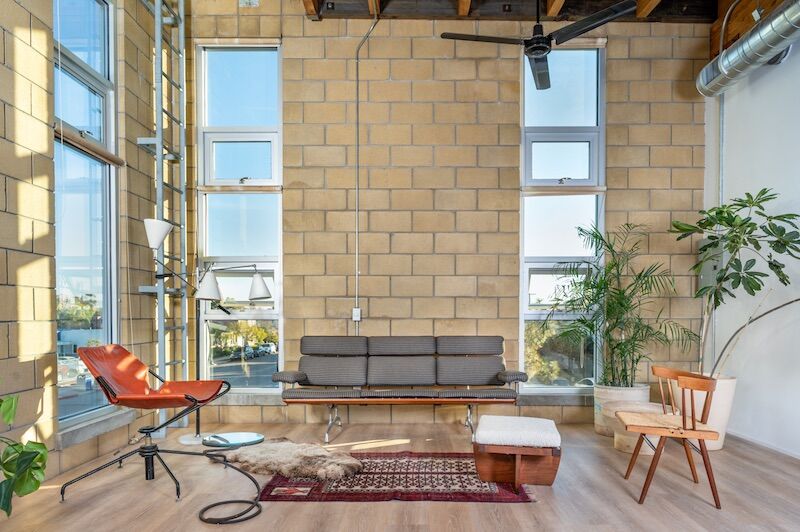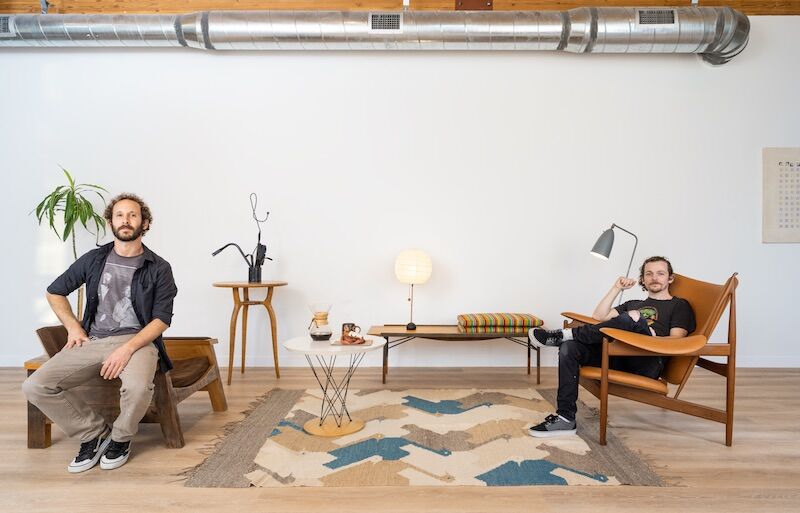Walking into Whatever Gallery is much like walking into your most design-savvy friend’s apartment. It’s styled to a T, and there are no price tags on the furnishings.
That’s because, as the name indicates, it is a gallery—or showroom—of Noah Feldman and Graham Loper’s proudest midcentury finds. Look, learn, and, if you feel so obliged, suggest a price.
“It’s a gallery in that we only have a few pieces displayed,” explains Feldman. “People can come in and buy. But we’re wanting to use this as a space to not just sell things but also to teach people more about midcentury furniture.”
Co-owners Feldman and Loper are capable teachers. They’ve each built their career out of a love for midcentury pieces, and their joint venture started because of one simple truth: Furniture can be heavy and hard to move.
They met about four years ago when they showed up at the same time to make an offer on a Mastercraft brass-framed sofa for sale in Point Loma. As Feldman recalls: “It was a slightly awkward situation. We were both curly-haired, scraggly guys. We’re both twins. We had all these things in common. We recognized we could help each other out, so we teamed up on that sofa and the rest was history.”
They’ve been “flipping furniture” together ever since, finding undervalued midcentury furnishings across the US, buying them—sometimes refurbishing—then selling them to those who see greater value. That’s mainly interior designers and architects, but also avid midcentury collectors.
And even as the Feldman and Loper didn’t write the book on the midcentury furniture craze, the self-taught collectors do own plenty of those books—stacked all over the floor, Loper admits—and can authoritatively argue for style’s timelessness.
“This was the first furniture designed for modern living, and that’s why it stays around, because it’s made for the spaces we still live in,” Loper explains. “It’s also a bit of a rebellion from your parents’ or grandparents’ furniture. If you sit on a piece of furniture from 1890, it’s not comfortable. They wanted to torture you a little bit. The pieces from 1950 onward, there’s an emphasis on comfort that didn’t exist before then.”
Feldman adds that many midcentury pieces can also be considered collector’s editions, since they’re often tied to a certain name, like Charles and Ray Eames, Vladimir Kagan, or Isamu Noguchi. “People are collecting them as they would art,” Feldman says. “It’s functional sculpture.”

Whatever Gallery 2
Chad Kelco
Much of Whatever Gallery’s sales are conducted through their website and Instagram, and they have a space in Barrio Logan that houses their inventory. They consider the South Park showroom, which opened just before the new year, a means for them to directly play to the demo of San Diego’s own midcentury enthusiasts and midcentury-curious.
In light of the pandemic, shoppers or even browsers can visit by appointment only. Eventually, Feldman and Loper plan to have open hours. Make an appointment by email at [email protected], or do as the millennials do and simply DM them with sourcing requests.
“We can source anything,” Feldman says. “That’s what we do.”
Whatever Gallery
2202 30th Street, South Park

Noah Feldman (left) and Graham Loper, owners of Whatever Gallery
PARTNER CONTENT
Chad Kelco



